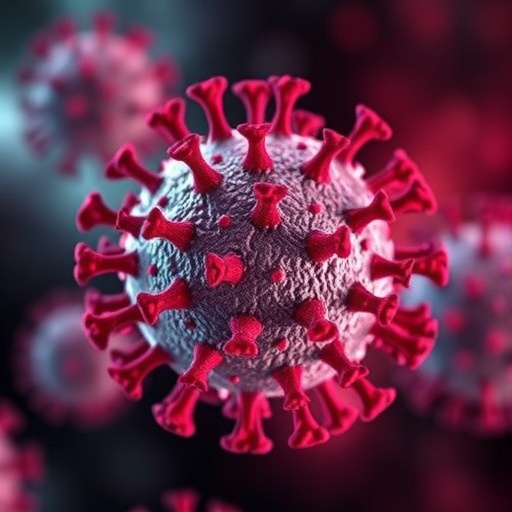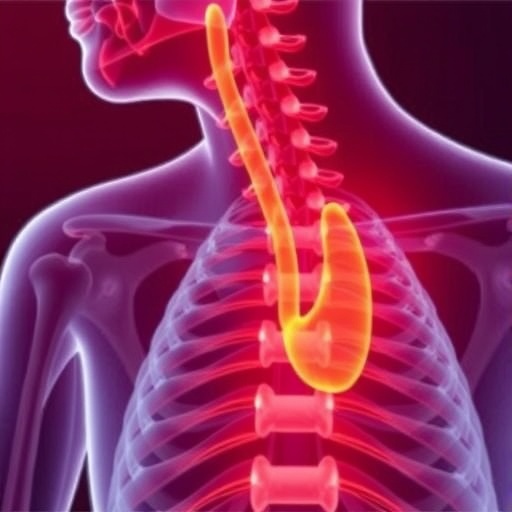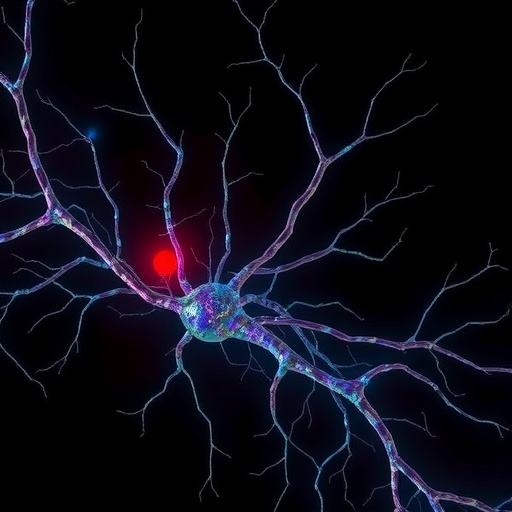In a groundbreaking development that holds promise for combatting one of the most deadly viral pathogens known to humankind, scientists have made significant strides in neutralizing the notorious Marburg virus (MARV). Marburg virus, a member of the filovirus family alongside Ebola, causes a severe hemorrhagic fever that often results in high fatality rates during outbreaks. Despite escalating incidences of MARV infections, no approved vaccines or therapeutic agents currently exist for human use, leaving affected populations vulnerable and healthcare responses limited.
The core of this breakthrough lies in engineering the Marburg virus glycoprotein (GP), which plays an essential role in viral attachment and entry into host cells. Researchers have focused on stabilizing the prefusion conformation of the MARV GP ectodomain trimer—the structural state before the virus fuses with the host cell membrane. This prefusion state is crucial because it presents neutralizing epitopes recognized by antibodies, making it a prime target for vaccine design and immunotherapeutic intervention. By introducing targeted mutations, the team successfully enhanced the expression levels and thermal stability of the GP trimer, thereby increasing its immunogenicity in preclinical models.
The study’s most compelling revelation is the identification of a potent, fully human monoclonal antibody named MARV16. Unlike previously described antibodies, MARV16 demonstrates broad-spectrum neutralizing activity against all known Marburg virus strains, as well as against related filoviruses such as Ravn virus and Dehong virus. Remarkably, MARV16 exhibits a 40- to 100-fold increase in neutralization potency compared to earlier antibodies, setting a new benchmark in the fight against these deadly hemorrhagic viruses.
Functional analyses have established that MARV16 confers therapeutic protection in guinea pigs experimentally infected with MARV, highlighting its potential as a life-saving treatment. The antibody’s efficacy in this animal model underscores its promise for clinical development, especially considering the current lack of approved therapies for MARV infection in humans.
Delving into the structural basis for MARV16’s broad neutralizing capacity, the researchers employed cryo-electron microscopy to visualize the antibody bound to the prefusion Marburg GP. This high-resolution structure revealed that MARV16 specifically targets an epitope that spans both the GP1 and GP2 subunits, which are integral to receptor engagement and membrane fusion. By binding this site, MARV16 blocks the virus from attaching to its cellular receptor and prevents the dramatic conformational changes necessary for viral entry—a dual mechanism underscoring its exceptional neutralizing capability.
Moreover, the study unveiled the elaborate architecture of the Marburg virus GP glycan cap, a heavily glycosylated region that shields the receptor-binding site (RBS) from immune recognition. This glycan cap poses a formidable obstacle for antibody binding but shares architectural features with glycoproteins from distantly related filoviruses, suggesting conserved structural vulnerabilities that can be exploited therapeutically.
Interestingly, MARV16’s epitope partially overlaps with regions targeted by other previously identified receptor-binding site-directed antibodies. These findings indicate that MARV16 can bind simultaneously with these antibodies to the same viral glycoprotein, enabling the formation of potent antibody cocktails. Such combination therapies are significant because they require the virus to acquire multiple concurrent mutations to evade neutralization, thereby limiting the risk of resistance emerging during treatment.
The advancement in stabilizing the prefusion Marburg GP trimer vaccine antigen, coupled with the discovery of MARV16, represents a critical leap forward in both preventative and therapeutic strategies against Marburg virus disease. Stabilized GP trimers are anticipated to elicit robust immune responses, making them promising vaccine candidates, while MARV16 provides a blueprint for developing highly effective monoclonal antibody therapies with broad and potent activity.
These scientific accomplishments come at a crucial time when filovirus outbreaks continue to challenge global health infrastructure, particularly in regions with limited access to advanced medical care. The ability to generate vaccine candidates with enhanced stability and immunogenicity, alongside potent cross-reactive antibodies, may revolutionize the response to hemorrhagic fever outbreaks caused by MARV and related viruses.
Future research will be vital to translating these preclinical findings into safe and effective vaccines and antibody therapies that can be deployed in human populations. Clinical trials evaluating the safety profile, pharmacokinetics, and protective efficacy of MARV16 as a monoclonal antibody treatment are essential next steps. Simultaneously, optimizing the stabilized Marburg GP trimers as immunogens for vaccine development could foster durable immunity and potentially curb the spread of Marburg virus.
This work underscores the power of rational protein engineering and structural virology to reveal viral vulnerabilities and inform the design of next-generation countermeasures. It highlights a paradigm in which detailed molecular understanding of viral entry machinery directly informs the development of transformative vaccines and therapeutics capable of curtailing deadly viral diseases.
By harnessing advanced biotechnological approaches and leveraging human antibody repertoires, researchers are paving the way toward a future where outbreaks of Marburg virus—once incurable and devastating—can be prevented or effectively treated. This milestone provides hope not only for endemic regions but also for global preparedness against emerging infectious diseases from filoviruses.
As the scientific community continues building on these findings, the prospect of clinically available medical interventions against Marburg virus disease becomes increasingly tangible. This marks an era of optimism where innovative immunological tools stand to save countless lives from the grip of hemorrhagic fever viruses.
Subject of Research: Marburg virus neutralization, vaccine antigen engineering, monoclonal antibody therapeutics
Article Title: Potent neutralization of Marburg virus by a vaccine-elicited antibody
Article References:
Addetia, A., Perruzza, L., Sprouse, K. et al. Potent neutralization of Marburg virus by a vaccine-elicited antibody. Nature (2025). https://doi.org/10.1038/s41586-025-09868-1
Image Credits: AI Generated
Tags: antibody-mediated neutralization strategiesfilovirus vaccine advancementshemorrhagic fever treatment innovationsimmunotherapy for Marburg virusMarburg virus glycoprotein engineeringMarburg virus outbreak responseMarburg virus research breakthroughsmonoclonal antibody therapy for viral infectionsneutralizing antibodies against Marburg virusprefusion conformation in virus researchvaccine development for Marburg virusviral pathogenicity and vaccine design






